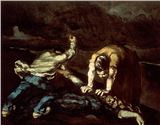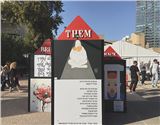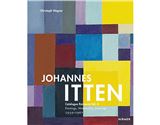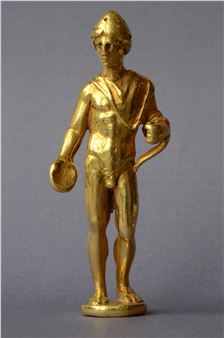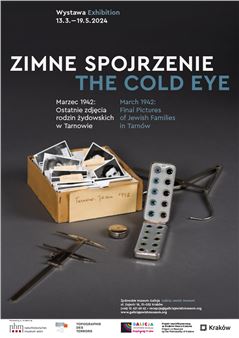Miracle of Light. Medieval Stained Glass in Poland
NMK, National Museum in Krakow
Krakow | PolandIn the Middle Ages, stained glass windows in churches were a huge artistic, technical and financial challenge, thus confirming the principals' prestige. Early Modern was a period when these stained glass windows were being removed, so that a very small percentage has survived to this day. Despite the fascination it stirred in the nineteenth century, stained glass was regarded as a decorative art and was much underrated, and still is - like the light and color that combine to create it - a phenomenon as fascinating as it is elusive.
Stained glass only comes to life when light goes through it. Let's cast a little illumination on this phenomenon: What skills did glaziers have? What was their place in the art panorama of the time? How to “read” stained glass? These are the questions that the exhibition's creators raise in the first section, presenting medieval stained-glass panels from areas in present-day Poland, shown against the background of other branches of art that together once created the splendor of sacred interiors. Further on is the neglect of stained glass, their removal from hallowed interiors, and from the consciousness of people in Early Modern period. Finally, various aspects of the rediscovery of stained glass in the 19th century are presented: the first manifestations of fascination, conservation campaigns, projects for new glazings for medieval churches, and collecting. The centerpieces of this account are the medieval stained-glass panels placed high behind Veit Stoss' altarpiece in St. Mary's Church in Krakow. Their luminous glazing–testifies to their difficult history, as well as to their current state of preservation. Both aspects constitute a particularly strong chord in the exhibition. The "Miracle of Light" is a unique undertaking, thanks to which you can marvel at stained glass from Polish museum and private collections, as well as from churches and monasteries. The exhibit also features works of panel painting, embroidery, goldsmithing, documents, drawings, and glazing designs. Many of these items have never been presented to the public. In recent years, some of them have undergone research and careful conservation at the Faculty of Conservation and Restoration of Works of Art at the Academy of Fine Arts in Krakow - such as stained glass windows (created around 1200 AD) from the former Zamoyski collection in Adampol.

In the Middle Ages, stained glass windows in churches were a huge artistic, technical and financial challenge, thus confirming the principals' prestige. Early Modern was a period when these stained glass windows were being removed, so that a very small percentage has survived to this day. Despite the fascination it stirred in the nineteenth century, stained glass was regarded as a decorative art and was much underrated, and still is - like the light and color that combine to create it - a phenomenon as fascinating as it is elusive.
Stained glass only comes to life when light goes through it. Let's cast a little illumination on this phenomenon: What skills did glaziers have? What was their place in the art panorama of the time? How to “read” stained glass? These are the questions that the exhibition's creators raise in the first section, presenting medieval stained-glass panels from areas in present-day Poland, shown against the background of other branches of art that together once created the splendor of sacred interiors. Further on is the neglect of stained glass, their removal from hallowed interiors, and from the consciousness of people in Early Modern period. Finally, various aspects of the rediscovery of stained glass in the 19th century are presented: the first manifestations of fascination, conservation campaigns, projects for new glazings for medieval churches, and collecting. The centerpieces of this account are the medieval stained-glass panels placed high behind Veit Stoss' altarpiece in St. Mary's Church in Krakow. Their luminous glazing–testifies to their difficult history, as well as to their current state of preservation. Both aspects constitute a particularly strong chord in the exhibition. The "Miracle of Light" is a unique undertaking, thanks to which you can marvel at stained glass from Polish museum and private collections, as well as from churches and monasteries. The exhibit also features works of panel painting, embroidery, goldsmithing, documents, drawings, and glazing designs. Many of these items have never been presented to the public. In recent years, some of them have undergone research and careful conservation at the Faculty of Conservation and Restoration of Works of Art at the Academy of Fine Arts in Krakow - such as stained glass windows (created around 1200 AD) from the former Zamoyski collection in Adampol.
Artists on show
Contact details



